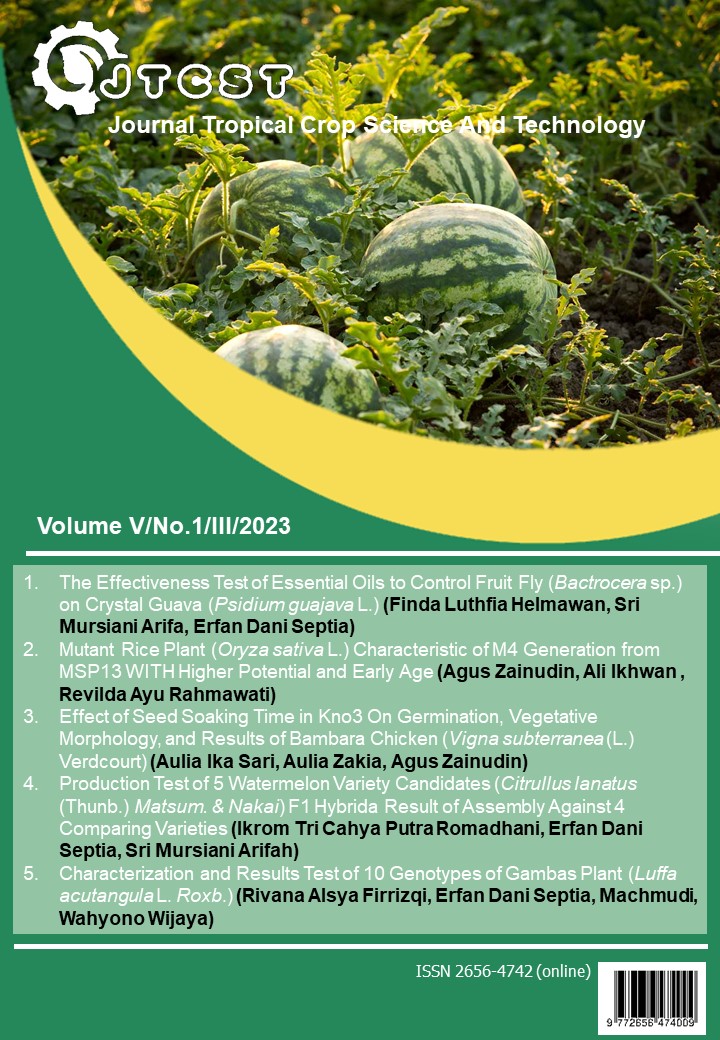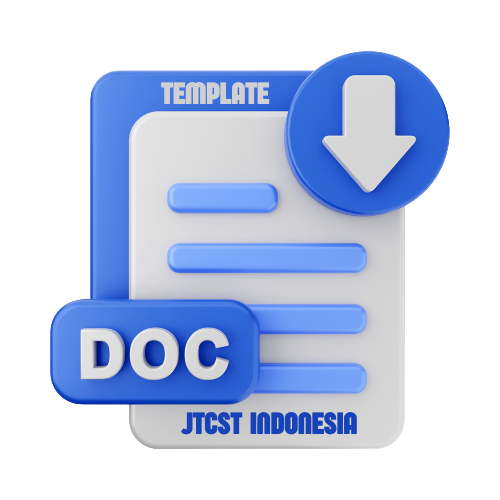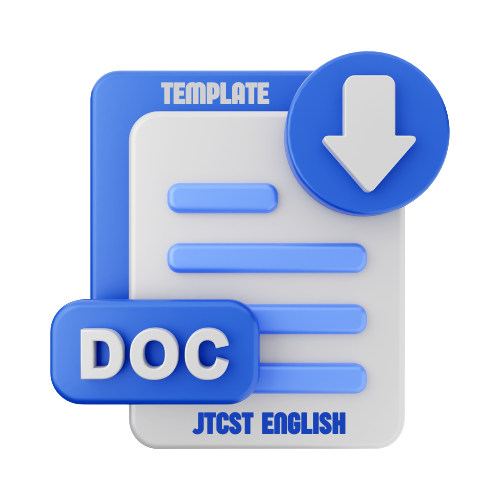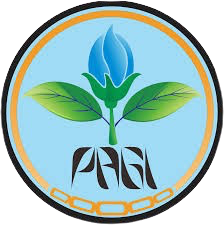Production Test of 5 Watermelon Variety Candidates (Citrullus Lanatus (Thunb.) Matsum. & Nakai) F1 Hybrida Result of Assembly Against 4 Comparing Varieties
DOI:
https://doi.org/10.22219/jtcst.v5i1.29725Keywords:
Breeding, qualitative, quantitativeAbstract
Watermelon (Citrullus lanatus) is a widely consumed and cultivated fruit in Indonesia, cherished for its numerous benefits, high economic value, and short plant life. To enhance watermelon quality, plant breeding is employed, aiming to develop superior hybrid varieties. This study, conducted between September and November 2022 on PT. Aditya Sentana Agro's experimental land, evaluated candidate hybrid watermelon varieties (codes 3078, 3079, 3080, 2844, 2845) against comparison varieties (Winda, Mardi, Black Panther, Palguna). Using Randomized Complete Block Design (RCBD) with one genetic factor at 9 levels, repeated 3 times, a total of 27 experimental units were established, each consisting of 10 plants, summing up to 270 plants. Qualitative variables such as fruit skin color, pattern color, flesh color, and shape, along with quantitative variables like fruit weight, length, diameter, dissolved solids, flowering day, skin thickness, and percentage of fruit damage, were observed. The research revealed variations in fruit weight, length, diameter, dissolved solids, and flowering day among the different varieties. Promising candidates for new varieties were identified as codes 2845 and 3078 based on these quantitative traits. This study contributes valuable insights into the potential advancements in watermelon breeding, emphasizing the importance of selecting varieties with desirable characteristics for improved agricultural outcomes.
Downloads
References
Amzeri, A., Badami, K., Gita, P., Syah, M. A., & Daryono, B. S. (2021). Phenotypic and genetic diversity of watermelon (Citrullus lanatus) in East Java, Indonesia. Biodiversitas Journal of Biological Diversity, 22(11).
Ariawan IMA, Kencana IPEN, & Suciptawati NLP. 2013. Komparasi analisis gerombol (cluster) dan bitplot dalam pengelompokan. E-Jurnal Matematika. 2(4):17-22.
Babu MP, Bharati AV, Madhuri PLD, Rani DR, & Sravani A. 2012. Analysis of dendrogram tree for identifying and visualizing trends in multi-attribute transactional data. International Journal of Engineering Trends and Technology. 3(1):14-18
Badan Pusat Statistik (2021). Produksi Tanaman Buah-buahan.
Effendi, E. M., & Wardatun, S. (2017). Potensi Sari Buah Semangka Merah (Citrullus vulgaris rubrum) DAN Sari Buah Semangka Kuning (Citrullus vulgaris flavum) sebagai Peluruh Batu Ginjal Kalsium Oksalat Secara in vitro. Ekologia, 12(1), 6-11.
Endelman, J. B., Atlin, G. N., Beyene, Y., Semagn, K., Zhang, X., Sorrells, M. E., & Jannink, J. L. (2014). Optimal design of preliminary yield trials with genome‐wide markers. Crop Science, 54(1), 48-59.
Farmia, A., & Wartapa A. (2018) Produksi Benih Hibrida. Jakarta: Kementrian Pertanian.
Ferdyansyah, B. (2022). Pengaruh Jenis Dan Dosis Pupuk Kalium Terhadap Pertumbuhan, Produksi Dan Kemanisan Buah Melon (Cucumis Melo L.) (Doctoral dissertation, Universitas Islam Riau).
Fila, W A, Itam, E H, Johnson, J T, Odey, M O, Effiong, E E, Dasofunjo, K, & Ambo, E E (2013), ‘Comparative Proximate Compositions of Watermelon Citrullus lanatus, Squash Cucurbita Pepo’l, and Rambutan Nephelium Lappaceum’, International Journal of Science and Technology, 2(1), pp. 81 – 88.
Handayani, T., & Hidayat, I. M. (2012). Keragaman genetik dan heritabilitas beberapa karakter utama pada kedelai sayur dan implikasinya untuk seleksi perbaikan produksi. Jurnal Hortikultura: 22(4):327-333
Haryati, S (2022). Buku Pedoman Budidaya Semangka. Bogor. Kementrian Pertanian.
Helmayanti, P., Wahyudi, A., & Nazirwan, N. (2020). Karakterisasi Lima Galur Semangka Mini Generasi Ketiga (F3) dengan Tipe Warna Kulit Buah Gelap. J-Plantasimbiosa, 2(1).
Hidzroh, F., & Daryono, B. S. (2021). Keseragaman dan kestabilan karakter tanaman melon (Cucumis melo L.‘Tacapa Gold’) berdasarkan karakter fenotip dan Inter-Simple Sequence Repeat. Biospecies, 14(2), 11-19.
Indonesia Customs & Excise Laboratory, 2016. Nilai Brix Untuk Menentukan Kualitas Pada Buah-Buahan, Jakarta: Balai Pengujian dan Intentifikasi Barang Tipe A
Isdiantoni, I., Wahdah, R., & Prasetiyo, H. (2020). Usahatani Dan Pemasaran Semangka (Studi Kasus pada Budidaya Semangka Biji di Lahan Tegal). Jurnal Pertanian Cemara, 17(1), 30-48.
Lou LL, Wehner TC (2016) Qualitative inheritance of external fruit traits in watermelon. HortScience 51, 487–496
Makful, Kuswandi, Sahlan, Andini M. 2019. Evaluasi terhadap kinerja beberapa koleksi semangka hibrida dari penelitian buah tropis Indonesia. Jurnal Budidaya Pertanian 15 (2): 101-105.
Maragal, S., Rao, E. S., & Lakshmana Reddy, D. C. (2019). Genetic analysis of fruit quality traits in prebred lines of watermelon derived from a wild accession of Citrullus amarus. Euphytica, 215, 1-15.
Nuraida, D. (2012). Pemuliaan tanaman cepat dan tepat melalui pendekatan marka molekuler. El-Hayah: Jurnal Biologi, 2(2).
Rabou AMA, & El-Sayd EM. 2021. Genetic variability, heritability and correlation in watermelon. Egypt J Appl Sci 36 (3): 43-58.
Rohmat, R., Kartahadimaja, J., & Hakim, N. A. (2020). Karakter Benih Hasil Selfing Pertama (S1) pada Enam Varietas Semangka. J-Plantasimbiosa, 2(1).
Sibuea, S. J., Chotimah, H. E. N. C., Kresnatita, S., Oemar, O., & Sajarwan, A. (2022). Respon Pertumbuhan Dan Hasil Tanaman Semangka (Citrullus Vulgaris Schard) Akibat Pemberian Poc Limbah Buah Buahan Di Tanah Gambut. AgriPeat: 23(2), 102-110.
Wahyudi, A., Mutaqin, Z., & Dulbari, D. (2019). Evaluasi Galur Semangka Berbiji Tipe Lonjong dan Non BijiTipe Bulat. J-Plantasimbiosa, 1(1).
Yasinda, A. A., Sutjahjo, S. H., & Marwiyah, S. (2015). Karakterisasi dan evaluasi keragaman genotipe semangka lokal. Buletin Agrohorti. 3 (1): 47-58
Downloads
Published
How to Cite
Issue
Section
License
Copyright (c) 2023 Ikrom Tri Cahya Putra Romadhani, Erfan Dani Septia, Sri Mursiani

This work is licensed under a Creative Commons Attribution-ShareAlike 4.0 International License.
Authors who publish with this journal agree to the following terms:
- Authors retain copyright and grant the journal right of first publication with the work simultaneously licensed under a Creative Commons Attribution License that allows others to share the work with an acknowledgement of the work's authorship and initial publication in this journal.
- Authors are able to enter into separate, additional contractual arrangements for the non-exclusive distribution of the journal's published version of the work (e.g., post it to an institutional repository or publish it in a book), with an acknowledgement of its initial publication in this journal.
- Authors are permitted and encouraged to post their work online (e.g., in institutional repositories or on their website) prior to and during the submission process, as it can lead to productive exchanges, as well as earlier and greater citation of published work (See The Effect of Open Access).











